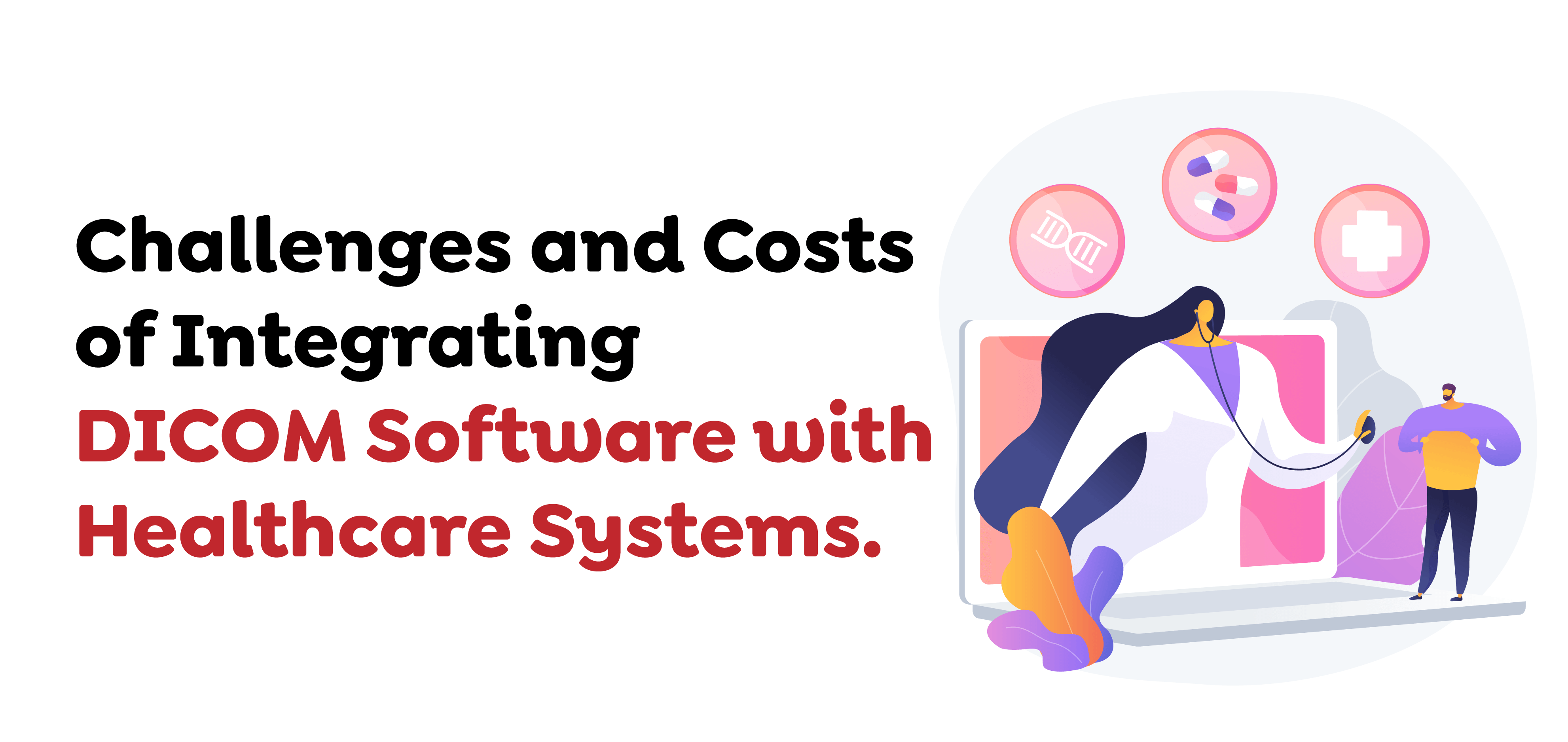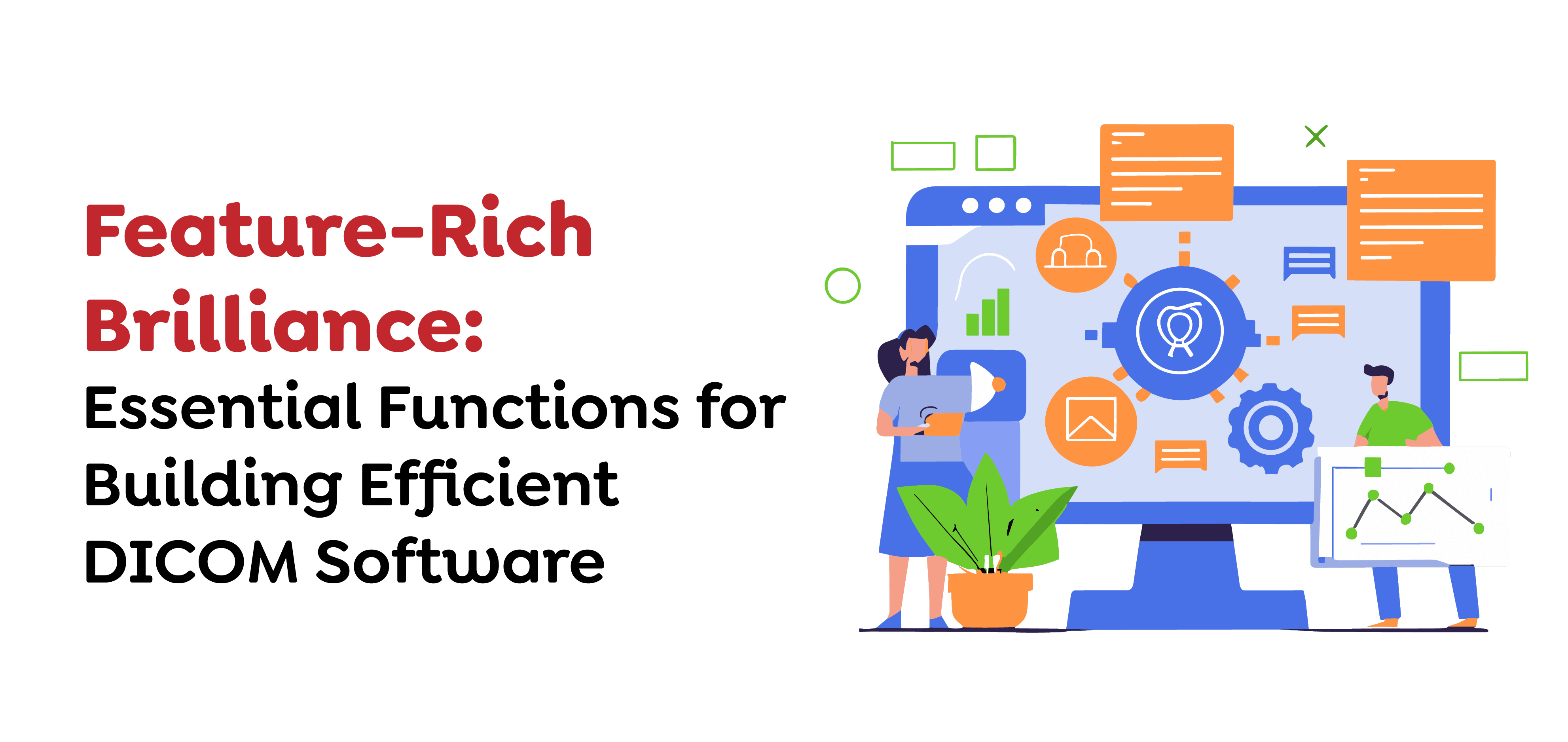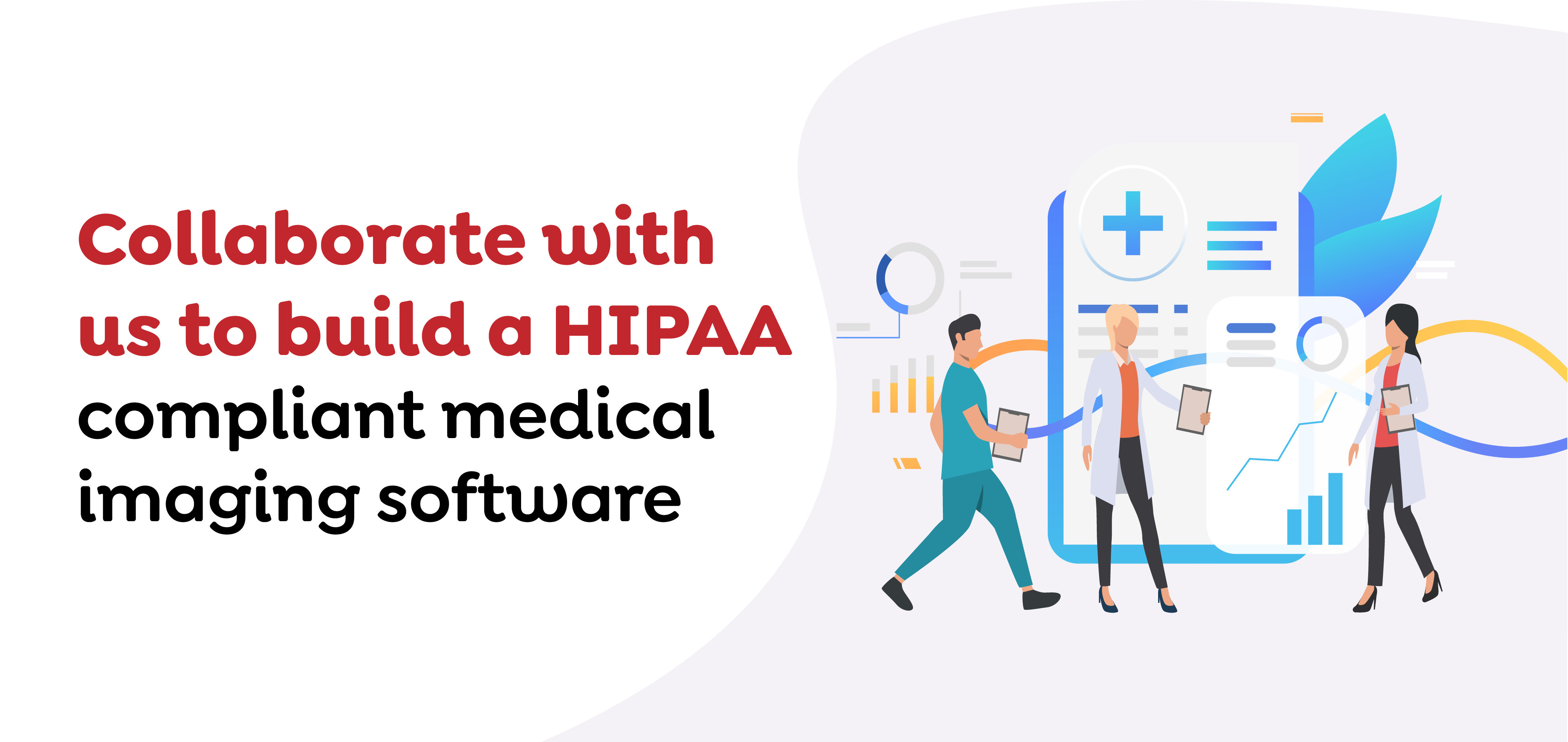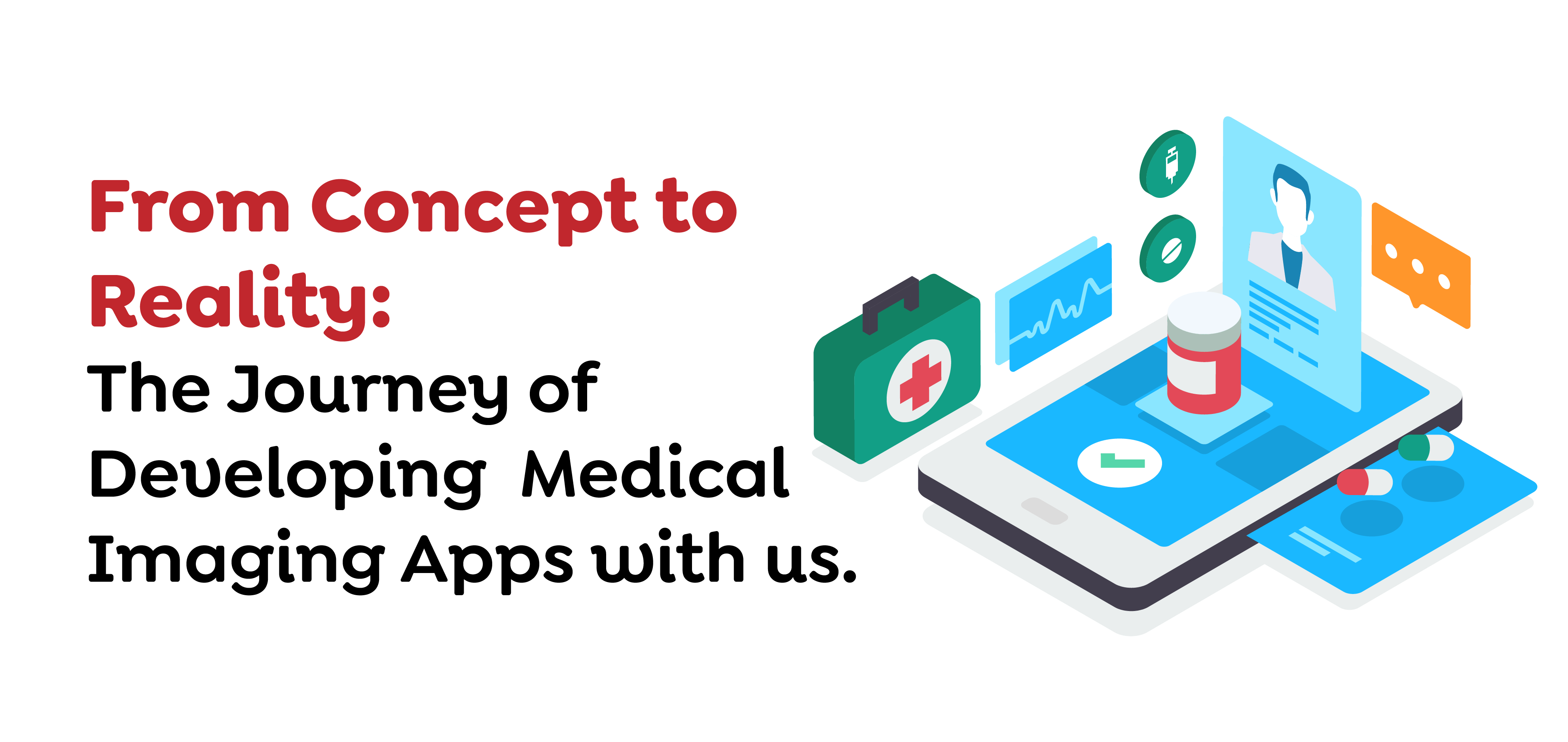Write Us
We are just a call away
[ LET’S TALK AI ]
X
Discover AI-
Powered Solutions
Get ready to explore cutting-edge AI technologies that can transform your workflow!


The progress of technology has the potential to enhance various aspects of society and elevate it to new heights. This progress is evident in every sector, including medical science. Modern imaging technologies are widely used in today’s healthcare system to facilitate effective diagnosis and treatment planning. According to market estimates, this industry is expected to expand significantly, with growth projected to reach $12.76 billion by 2030 from $7.52 billion in 2023.
Digital Imaging and Communications in Medicine (DICOM) is a standard format for storing, transmitting, and analyzing medical images across various platforms and devices, supporting different imaging technologies and protocols. DICOM medical imaging software by healthcare service providers offers significant benefits, including improved patient care, increased diagnostic accuracy, and optimized processes. Consequently, there is a noticeable surge in the demand for DICOM software advancement.
This blog delves into the nuanced considerations surrounding the financial facets of DICOM software evolution. Furthermore, we investigate the numerous factors impacting expenditures, indispensable features, and more, presenting insights to aid a medicine delivery app development company in forming knowledgeable choices regarding their DICOM software investments.
Collaborate with us to harness AI, ML and IOT into the burgeoning medical imaging software.
Also Read : How AI And Machine Learning Are Helping App Development Field?
Digital imaging applications in medicine are crucial in modern healthcare with AI and ML, enabling the conservation, transmission, and examination of medical images. It adheres to the DICOM standard, guaranteeing adaptability across imaging devices and platforms. This application supports adept diagnosis, treatment planning, and patient care, accommodating diverse imaging methodologies such as X-ray, MRI, CT scan, and ultrasound.
As previously noted, the average cost for formulating DICOM medical imaging software can vary based on multiple factors influencing the overall development expense, including the complexity of the software, the timetable for software delivery, the location of the contracted mobile app development company, adherence to regulatory standards like HIPAA, and the level of expertise demanded from the medicine delivery app development company, among other considerations.
In more straightforward language, highly intricate medical imaging software will require a more significant investment, ranging from a few thousand to several hundred thousand dollars. At the same time, less complex solutions may be produced at a reduced cost. Nevertheless, regardless of complexity, investing in top-notch DICOM medical imaging software is crucial for delivering effective healthcare services.

The development of DICOM medical imaging software is a multifaceted process involving multiple stages and expertise. Here are the key factors influencing the cost of developing DICOM medical imaging software.
DICOM compliance is vital for interoperability in medical imaging. Complex requirements, especially integration features like connecting with HIS and EHR, significantly impact the development process and costs.
The level of customization for imaging and visualization tools directly affects DICOM software development costs. Tailoring these tools to meet specific healthcare needs, from basic viewing to advanced analytical features, enhances utility but increases project complexity.
Formidable protective measures are imperative for developing DICOM software, guaranteeing the safeguarding of patient data and adherence to healthcare regulations. The intricacy of security attributes impacts development expenses, balancing the necessity for secure data transmission and ease of access.
The requisites for expandability and infrastructure wield substantial influence over the expenses incurred in constructing DICOM medical imaging software. Devising plans for software scalability and resilient infrastructure is indispensable to managing escalating data volumes and simultaneous users without incurring considerable supplementary costs.
Integrating DICOM software with prevailing healthcare systems poses a complex and expensive undertaking. Tailored development, interim solutions, and exhaustive testing are imperative to ensure seamless compatibility with Hospital Information Systems (HIS), Electronic Health Records (EHR), and other clinical applications, contributing to the overall development expenditure.
Ensuring DICOM software supports multiple imaging modalities is essential for comprehensive care. This versatility allows for integrating CT, MRI, X-ray, and ultrasound images. Moreover, the software should also be able to support IoT devices, as medical IoT devices are gaining popularity. The medical imaging software development cost significantly increases with the complexity of supporting diverse modalities and standards. Tailoring the software to accommodate DICOM in radiology ensures compatibility with global healthcare protocols.
This capability facilitates seamless communication and image exchange between different systems and devices. As the software becomes more adaptable to various modalities, it becomes a more valuable tool in diagnosing and treating patients, reflecting the investment in its development.
Here’s why a medicine delivery app development company should be a top consideration for your healthcare app development in India:
The development team’s expertise of a healthcare app development company is crucial to the cost to develop a healthcare app. While skilled and experienced developers command higher salaries, on the one hand, the right development team also includes other resources, including a project manager, tech leads, a DevOps engineer, a business analyst, a UI/UX engineer, cloud computing engineer and a QA expert, on the other hand.Ultimately, choosing the right team should be a balance between cost, quality, and collaboration efficiency, all of which directly impact the overall investment in DICOM software development.

Creating efficient DICOM software requires careful consideration of its capabilities. It’s vital to incorporate features that meet the demands of modern healthcare. Here are the essential features of custom medical image analysis software.
DICOM image viewing and manipulation are critical for diagnosing and treating patients accurately. These functionalities allow healthcare professionals to quickly access, view, and analyze medical images. The ability to adjust brightness, contrast, and zoom enhances the clarity and detail of images. This is particularly important in complex cases where precision is critical.
Integrating these features supports the growing role of DICOM in the healthcare industry, enabling seamless collaboration and decision-making among medical teams. Efficient image manipulation tools are essential for timely and effective patient care, highlighting their importance in medical software development.
Patient information management is a cornerstone of DICOM software, ensuring data is organized and easily accessible. This feature streamlines the workflow for healthcare providers, allowing quick retrieval of patient records and images. It’s essential for enhancing patient care and operational efficiency within medical facilities. Secure storage and access mechanisms are also crucial, safeguarding patient confidentiality and adhering to health data regulations.
Secure image storage and archiving are vital for maintaining the integrity of medical data. This ensures that healthcare providers can rely on a consistent and accessible database of patient images over time. Implementing robust encryption and data protection techniques is crucial to prevent unauthorized access and breaches. These security measures are fundamental to medical imaging software development, safeguarding patient confidentiality and compliance with regulatory standards.
Multi-modality support is essential for DICOM software to accommodate various medical imaging techniques. This functionality empowers the program to analyze and showcase images from CT scans, MRIs, X-rays, and ultrasounds on a unified platform. It improves the diagnostic procedure by offering an all-encompassing perspective of patient data across diverse imaging modalities.
Observance of the Health Insurance Portability and Accountability Act (HIPAA)
Ensuring conformity with the Health Insurance Portability and Accountability Act (HIPAA) is indispensable for DICOM software. This adherence upholds patient confidentiality and fortifies medical information, a fundamental element of reliance in healthcare. Abiding by HIPAA standards demands stringent data safeguarding measures, encompassing encryption, access controls, and secure data transmission protocols.
The cost to develop a healthcare app, DICOM medical imaging software mirrors the intricacy of amalgamating these protective measures. It is pivotal to forestalling data breaches and ensuring the secrecy of patient information. Adherence shields patients and healthcare providers from legal and financial consequences, accentuating its significance in the development procedure followed by a medicine delivery app development company.
These features form the backbone of effective DICOM software. They ensure the software meets the diverse needs of healthcare professionals and patients alike.
Also Read : Transforming Healthcare in the Skies With Air Ambulance in Dubai

Also Read : The Ultimate Guide to Energy Management Software Development: Mastering Energy Efficiency!
Developing DICOM software by a healthcare app development company requires a detailed and phased approach, from initial analysis to deployment and maintenance. To create a dependable, compliant, and user-friendly software application while meeting the healthcare business’s complicated objectives, each stage is crucial. Addressing these factors can significantly enhance patient care and operational effectiveness while improving the delivery of medical imaging services.

We at Techugo are proud to be setting the standard for DICOM medical imaging software development. Each project benefits from our professional team’s vast experience and inventiveness, which guarantees the implementation of solutions that meet industry standards and specifically address our client’s unique needs.
Also Read : Improving Healthcare App Development: Reasons Why You Should Invest in it!
As a proficient medicine delivery app development company, our dedication lies in delivering secure, practical, and user-friendly DICOM applications. We comprehend the intricacies of developing medical imaging software, merging state-of-the-art technology with a profound understanding of the healthcare sector. This positions us as your optimal collaborator in enhancing medical imaging capabilities. In addition, our experts safely transfer PACS/DICOM data using HL7 standards, guaranteeing PHI security and upholding data integrity, protection, privacy, and authenticity.
Write Us
sales@techugo.comOr fill this form